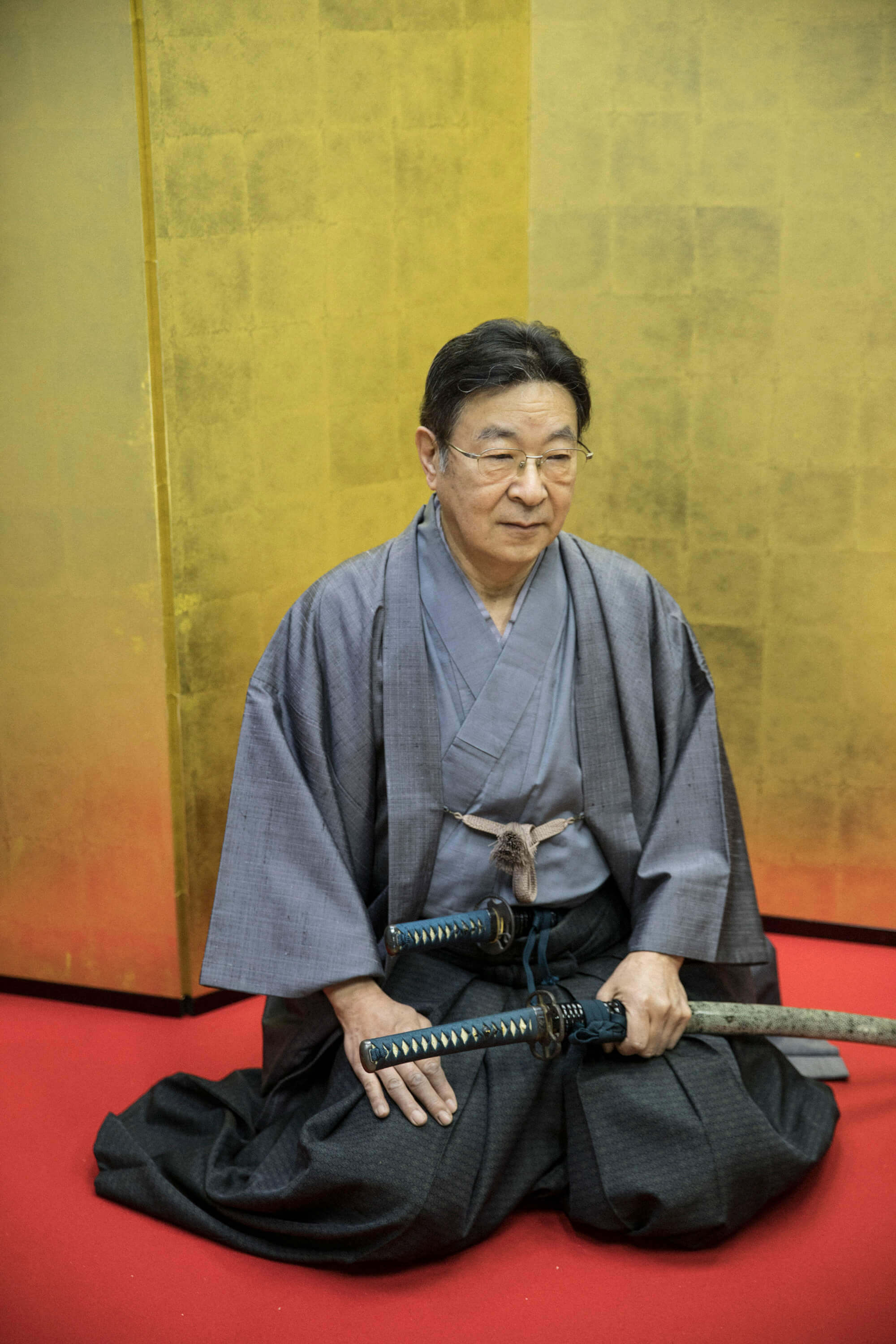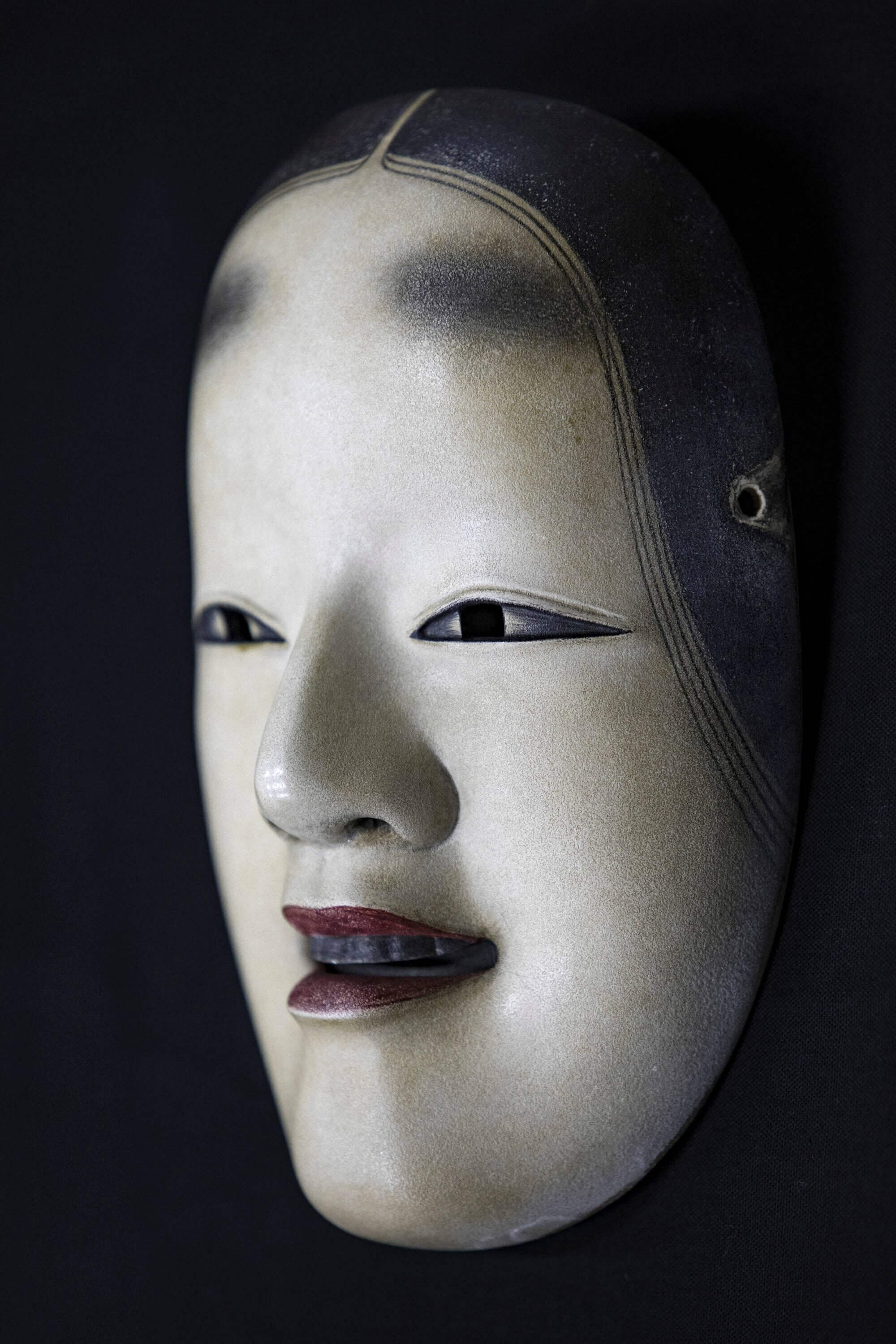I’d like to write something for you, but lately my time has been taken up meeting ghosts. This is how master-actor Udaka Michishige bade us farewell. He’d arrived by car with his box of masks each wrapped in silk for safekeeping. The first that he’d shown us was Hakushiki-jo, a tranquil old man only used in the Shinto ritual of Okina. The mask itself is considered divine, the eyebrows made of two rabbit fur pompons, the long beard of horse hair.
He’d offered us tea and a tin of date biscuits, a gift of friends visiting from Singapore. He’d recommended that we speak about this above all: that we’re all members of the universe, each part determines the other, in the same way as the body is affected by the health of every single one of its organs. He spoke like an amiable father approaching his seventies. Sensei Udaka is one of the greatest performers and at the same time carver of masks for one of the most ancient forms of traditional Japanese theatre, Noh. In Japan a sensei is, in its most complete form, a “teacher of life”.

Ernst Francisco Fennollosa graduated in philosophy from Harvard University in 1874. In 1878 he moved to Japan, where he taught and became the government’s arts advisor. He immediately became interested in Noh theatre: it was an aristocratic, refined and allusive form of theatre that took place on stages then and now in exactly the same way as in fourteenth-century Japan. Just reading the words and lyrics isn’t enough, they don’t transcribe the body’s movements and immobility, the vibrations of the voice in contact with the mask. The actors built their family tree to pass down the elaborate art from father to son. W.B. Yeats and Ezra Pound made ample use of it to inform their dramaturgical imagination. The best performances took place in open-air theatres, and the song and music combined with the sky, the sounds of the birds and the wind became part of the performance.
Noh theatre stages follow a strict design. Open on three sides, a long bridge leads to the main stage from the left. The walkway is marked by three pine trees, the first, the second, the third. It’s in that long entry, which may seem optional, that the transformative experience of the theatre takes places: a man becomes the ghost of another man, the physical body pushes a pressure that has the density of matter – it’s not wind but a certain force –, and the person can only be said to be different and complete when he gets to the stage with the green pine tree painted on the wooden backdrop. So to speak, he’s forgetting himself and entering another “self”. Solitude, worry, burden, blindness, rebirth, a totally new life in a certain sense: this is the sequence of feelings from the moment when the performance begins. Now Udaka-sensei can go beyond this darkness at the speed of light, accelerate his concentration and his mind, but the body continues to need that silent and terrible walk. The performer has to train his physical body. When body and mind manage to walk on the same level, the performer’s aura is very beautiful. When this balance is upset, there’s a loss, dialogues are forgotten, they can’t be visualized any more.

Eighty per cent of the stories in Noh theatre are told from the perspective of those who are already dead or spirits, and the spirits speculate about people who are dying, for example the approaching death of a monk who’s an educated person but his spirit isn’t up to it, or a member of the royal ranks dies and has money and power but no energy, and then perhaps a poor person dies and you can communicate with him and so a dialogue begins between the dead and the living.
For thirty years, Udaka-sensei studied esoteric Buddhism and he came to the conclusion that it’s interesting to observe the direction of religion, of Buddha, Christ or Allah, the purpose that they had, and it’s up to us to use the same force to go in a direction – which mountain could they see? what scene could they see? – but not be like them.
“With an eye to going beyond human life, if we observe nature, how the currents move, why salmon go upstream to lay their eggs where they were born for example, by observing nature, from the point of view not of the single person, but of the Earth, we’re shown so much evidence that thought and mind are stimulated by fields of electricity. There are different words for this, like chakra, attachment to birth or heaven. But these electrical energies can go beyond the physical body and connect us to other layers of the Earth, the external skin between space and the Earth. This casing protects the Earth from external events, like magnetism. If we were talking about an animal, then it’d be its shell. Today it seems to me that our thinking, the thought of most of we humans, is pointed in a single direction and our vibrations and energies aren’t protecting the Earth as they once did. This harmonious thought has been lost.”